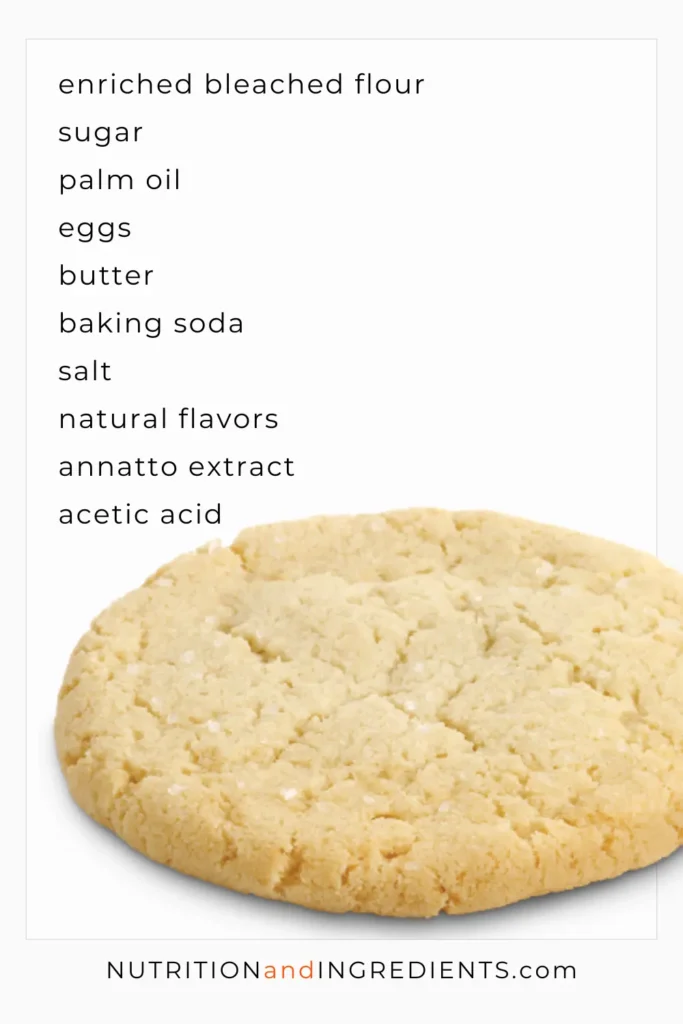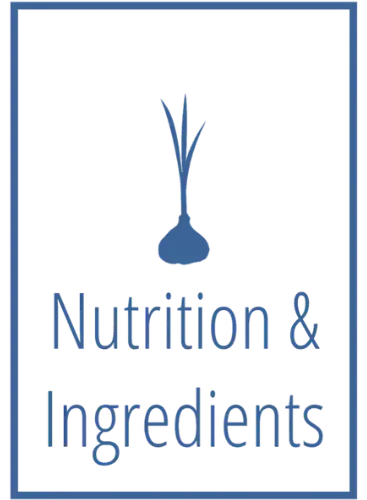Wendy’s Sugar Cookie

Wendy’s soft sugar cookie has 330 calories, 16 grams of dietary fat, 44 grams of carbohydrates, and three grams of protein.
Read this report for an in-depth review of the calories, nutrition facts, and ingredients in this popular sweet treat.
Sugar Cookie Nutritional Information
Nutrition facts are based on one sugar cookie from Wendy’s fast food restaurant.
Daily Value
Daily value (%DV) illustrates how much of a specific nutrient is in one cookie, relative to the recommended daily limit. Use %DV to compare foods and choose the best option for your dietary goals.
As shown in the chart below, Wendy’s sugar cookie is high in saturated fat.
Serving size: 1 Cookie
% DAILY VALUE
Use %DV to determine if the level of nutrients is low (5% or less) or high (20% or more).
|
%DV |
Level | |
|---|---|---|
|
Total Fat |
20% |
HIGH |
|
Saturated Fat |
40% |
HIGH |
|
Sodium |
13% |
MED |
%DV based on 2,000 calories
Calories
There are 330 calories in one sugar cookie.
Here is a summary of the number of calories by macronutrient, per serving:
More than half the total calories are derived from carbohydrates. Dietary fats make up 44% of total calories, and the remaining 3% is from protein.
Sugar Cookie
% calories from fat, carbs and proteinThe summary of calories by macronutrient is a rounded estimate based on the nutritional information provided by Wendy’s fast food restaurant. Actual calories may vary by location.
FITNESS TIME TO BURN 330 CALORIES
Estimate based on moderate level of activity by an adult with average BMI.
Nutrition Facts
Amount (%DV) per Cookie
Red indicates a high %DV.
|
Calories |
330 | |
|
%DV | ||
|
Total Fat |
16g |
21% |
|
Saturated Fat |
8g |
40% |
|
Trans Fat |
0g | |
|
Cholesterol |
20mg |
7% |
|
Sodium |
300mg |
13% |
|
Carbohydrates |
44g |
16% |
|
Dietary Fiber |
1g |
4% |
|
Total Sugars |
24g | |
|
Protein |
3g |
%DV based on a 2,000 calorie diet. Calorie needs vary and your %DV may be higher or lower. Provided for informational purposes only. Consult with your physician for dietary or healthcare advice.
Dietary Fats
One cookie contains 16 grams of total fat, including 8 grams of saturated fat. That is high.
The amount of saturated fat in a single cookie equates to a 40% daily value (%DV).
To calculate %DV, divide the amount of a nutrient per serving by the FDA-recommended daily limit.
|
per Serving |
Daily Limit* |
Daily Value | |
|
Total Fat |
16g |
78g |
21% |
|
Saturated Fat |
8g |
20g |
40% |
*Based on FDA general nutrition advice for an adult following 2,000 calorie daily diet.
SUMMARY OF FAT PER SERVING
Total Sugars
There are 24 grams of total sugars in one cookie.
Sugar is listed as the second ingredient.
The order in which ingredients are listed is important because food producers are required to list in descending order of dominance by weight. That means added sugar is a primary ingredient in Wendy’s sugar cookie recipe.
Check nutrition facts for the full list of Wendy’s menu options.

Compare the nutrition facts in Chick-fil-A’s Chocolate Chunk Cookie.
Sugar Cookie Ingredients and Allergens
Here is the list of ingredients in the popular sugar cookie treat from Wendy’s restaurant.
Ingredients |
|---|
|
Enriched Bleached Flour (bleached wheat flour, malted barley flour, niacin, iron, thiamine mononitrate, riboflavin, and folic acid), Sugar, Palm Oil, Eggs, Butter (cream, lactic acid), Baking Soda, Salt, Natural Flavors, Acetic Acid, and Annatto Extract (for color) |
Allergens
The sugar cookie served at Wendy’s is made with ingredients that contain egg, dairy, and wheat.
Check list of allergens in Wendy’s menu.

Nutrition facts, prices, and ingredients are based on available information as of the date of publication. Restaurants and food manufacturers may change recipes or formulations without notice. Check package labels and ask the product manufacturer or restaurant for the most up-to-date information. Unless otherwise stated, %DV is based on a 2,000 calorie diet. All reports and reviews published on this site are for informational purposes only. NutritionandIngredients.com does not provide healthcare advice or dietary recommendations. Always consult your licensed physician for any healthcare or dietary advice.
Nutrition, ingredients, product image source: The Wendy’s Company. Sugar cookie menu image courtesy of Wendy’s. Original designs by Nutrition & Ingredients for purposes of fast food nutrition research and reports.
